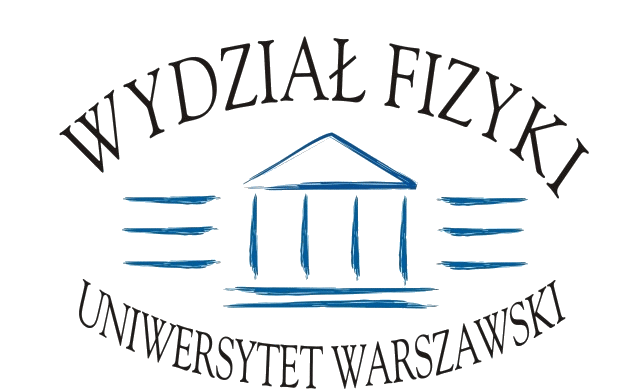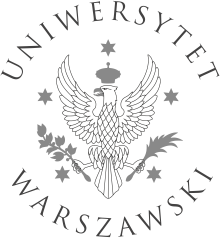Seminarium "Teoria cząstek elementarnych i kosmologia"
2017/2018 | 2018/2019 | 2019/2020 | 2020/2021 | 2021/2022 | 2022/2023 | 2023/2024 | 2024/2025 | 2025/2026
2025-11-27 (Czwartek)
Sebastian Trojanowski (NCBJ)
Neutrino Portals to Dark Matter: From Early Universe to Precision Cosmology
Neutrinos offer a window into beyond Standard Model (BSM) physics, and recent data prompt a re-evaluation of their role in the early universe. Neutrino portals facilitate thermal Dark Matter (DM) production, representing one of the few remaining benchmarks in the freeze-out paradigm, yet a difficult one to probe. In this talk, we first summarize constraints on such scenarios and discuss how recent and near-future cosmological data may soon illuminate these dark sectors. The latter part emphasizes the impact of resonant DM-neutrino scattering on perturbation evolution. We illustrate that incorporating these precision effects, typically associated with collider physics, significantly alters cosmological data analysis, with implications extending beyond the specific models discussed.
2025-11-20 (Czwartek)
Tomasz Taylor (Northeastern Univ. and Univ. Warsaw)
De S-matrix
I will discuss the properties of S-matrix describing the scattering processes of elementary particles in de Sitter spacetime
2025-11-06 (Czwartek)
Kamila Kowalska (NCBJ)
Quantum entanglement in perturbative scattering
I will discuss quantum entanglement in high-energy scattering of two particles characterized by an internal quantum number acting like a qubit. Working with a perturbative S-matrix, I will build the reduced density matrix of the final scattered state by tracing out the momentum degrees of freedom. In this construction, unitarity is guaranteed order by order by the optical theorem. I will present a novel analytical formula for the concurrence (qubit entanglement) of a mixed final state and show that, given an initial product state, it depends at the leading order on the real part of the inelastic forward amplitude. I will also address a recent proposal stating that some symmetries of the Lagrangian may emerge from a principle of entanglement minimization. I will show that for “flavored” scalar scattering this does not appear to be the case.
2025-10-30 (Czwartek)
Enrico Maria Sessolo (NCBJ)
Stabilizing dark matter with quantum scale symmetry
After reviewing a few basic notions of asymptotic safety in gravity and matter, I will show that in gauge-Yukawa theories quantum scale symmetry can prevent the appearance in the Lagrangian of couplings that would otherwise be allowed by the gauge symmetry. Such couplings correspond to irrelevant Gaussian fixed points of the renormalization group flow. Their absence implies that different sectors of the theory are secluded from one another, in similar fashion to the effects of a global or a discrete symmetry. As an example, I will impose the trans-Planckian scale symmetry on a model of Grand Unification based on the gauge group SU(6), showing that it leads to the emergence of several fermionic WIMP dark matter candidates whose coupling strengths are entirely predicted by the UV completion.
2025-10-23 (Czwartek)
Anish Ghoshal (IFT UW)
Inflation beyond slow roll: stochasticity, primordial black holes and scalar-induced gravitational waves
We discuss physics of inflationary cosmology beyond the assumption of standard slow-roll, and its consequences for metric perturbations leading to primordial black hole formation from large density fluctuations and first-order and second-order tensor perturbations propagating as gravitational waves. Next we will discuss how does the stochastic inflation offer a non-perturbative framework to calculate the distribution of density perturbations and in particular, large but rare fluctuations in the non-Gaussian tail of the distribution that could give rise to primordial black holes. We will discuss modelling of non-adiabatic perturbations on super-Hubble scales and we will compare the classical and stochastic delta-N formalisms used to calculate density perturbations. Presentation based on arxiv.org/abs/2409.12950, arxiv.org/abs/2306.04002, and arxiv.org/abs/2407.15082.
2025-10-16 (Czwartek)
Maciej Kierkla (IFT UW)
Finite-temperature bubble-nucleation with shifting scale hierarchies
Focusing on supercooled PTs in models with classical scale symmetry, we investigate the limitations of derivative expansions in constructing a thermal EFT description for bubble nucleation. We show that the derivative expansion for gauge field fluctuations diverges because the gauge field mass varies strongly between the high- and low-temperature phases. By computing the gauge fluctuation determinant, we show that these effects can be captured while accounting for large explicit logarithms at two loops. We show how this construction can improve nucleation rate calculations, providing a more robust framework for describing GW from supercooled PT in models like the SU(2)cSM.
2025-10-09 (Czwartek)
Jorinde van de Vis (CERN)
The bubble wall velocity in cosmological phase transitions
Cosmological first order phase transitions are a promising source of gravitational waves, and a possible explanation of the baryon asymmetry and dark matter abundance. Predicting the phenomenological consequences of such phase transitions requires knowledge of the expansion velocity of the bubbles formed in a phase transition. In this talk, I will summarize the computation of the wall velocity and present WallGo, a software package for the computation of bubble wall velocities. WallGo is the first publicly available code that computes the matrix elements, collision integrals Boltzmann equation and scalar field equation of motion for user-defined models. I will present results obtained with WallGo, and discuss estimates of the theoretical uncertainty of the bubble wall velocity. I will end with an estimate of the wall velocity in theories with strong coupling.
2025-10-02 (Czwartek)
Ayuki Kamada (IFT UW)
Decay of scalar condensation: two different approaches
Scalar condensation and its decay plays important roles in cosmology.A notable example is inflation and reheating driven by inflaton condensation and its decay. Two approaches can be found in literatures, in computing the decay (damping) rate of coherently oscillating scalar. One is based on the parametric resonance in a mode function of a daughter particle. The other is based on the effective action in the presence of a background field. In this talk, we see that these two approaches look very different in the course of computation, but actually give the same decay rate.






